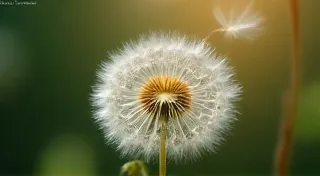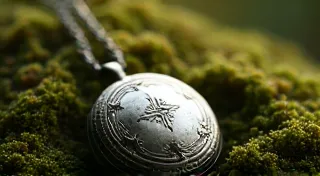Beyond the Crimson Blush: Unearthing Unique Watermelon Textures & Tastes
There’s a particular joy in holding an antique accordion. It’s not just the visual – the worn leather, the polished keys, the subtle patina of age – it’s the feeling of history resonating through your fingertips. Each button, each key, carries echoes of music played, dances danced, and lives lived. It's a physical connection to a past where entertainment was handcrafted, personal, and full of soul. Much like an heirloom watermelon, these instruments represent a time when quality, taste, and unique character were prized above all else.
For years, the supermarket watermelon has reigned supreme: a predictable, uniformly red globe. But beyond that familiar crimson blush lies a universe of watermelon varieties, each boasting a surprising and distinct texture and flavor profile. Growing heirloom watermelons is a journey back to that appreciation for uniqueness—a chance to reconnect with the sensory richness that modern agriculture often overlooks. It’s a slower process, requiring more care and attention, but the rewards are immeasurable.

A Brief History: From African Roots to American Gardens
Watermelons aren’t native to North America. Their story began in Africa, where wild varieties were cultivated for millennia. Brought to Europe by explorers, they eventually made their way to the Americas, where they thrived in the warm climate. Early American watermelons were vastly different from what we find today. They were often smaller, more intensely flavored, and possessed a remarkable diversity of appearances – some striped, others mottled, and each with a unique story to tell.
The Civil War era saw watermelons become a culturally significant crop, deeply intertwined with the lives of enslaved people who cultivated them. It’s a complex and often painful history, one that underscores the importance of understanding the origins of our food and the people who brought it to our tables. Preserving heirloom varieties isn’t just about preserving flavor; it’s about honoring that history and acknowledging the contributions of those who came before us.
The Sensory Landscape of Watermelon Flesh
Imagine biting into a watermelon and expecting the familiar, consistent crunch. Now, imagine instead encountering a silky smoothness, a delicate tenderness that melts on your tongue. Or perhaps a surprising burst of subtle sweetness, far more nuanced than the often-cloying sweetness of modern varieties. This is the world of heirloom watermelons.
The texture of a watermelon's flesh is profoundly affected by genetics, soil, and growing conditions. Some heirloom varieties, like ‘Charleston Gray,’ are known for their dense, almost grainy texture and intensely sweet flavor. Others, like ‘Moon and Stars,’ boast a crisp, refreshing bite with a delicate sweetness that balances perfectly with their striking appearance – dark green rind speckled with yellow dots resembling stars in a night sky. The careful management of water, essential for that crispness and sweetness, echoes the broader principles of irrigation strategies for watermelon perfection, ensuring the fruit reaches its full potential.
‘Black Diamond’ watermelon, originating from Mississippi, offers a stunning visual contrast with its deep black rind and vibrant crimson flesh, offering a particularly rich, almost chocolatey undertone. Then there’s ‘Yellow Doll,’ a delightful novelty with bright yellow flesh – surprisingly sweet and less grainy than its red counterparts. Each one provides a unique experience, a testament to the incredible diversity that exists within this seemingly simple fruit.
Growing Heirloom Watermelons: A Step-by-Step Guide
Growing heirloom watermelons is a rewarding, albeit slightly more involved, process compared to cultivating modern hybrids. They demand a bit more attention and understanding, but the payoff – that exceptional flavor and texture – is well worth the effort. Here's a step-by-step guide to help you on your journey:
- Choosing Your Varieties: Research different heirloom varieties and select ones suited to your climate and available space. Consider factors like disease resistance and ripening time.
- Starting Seeds: Watermelons require a long growing season. Start seeds indoors 4-6 weeks before the last expected frost. Use peat pots or biodegradable containers to avoid disturbing the roots when transplanting.
- Soil Preparation: Watermelons thrive in well-drained, sandy loam soil. Amend the soil with compost and well-rotted manure to provide essential nutrients. Healthy soil is the cornerstone of delicious fruit; a deep dive into navigating soil health for exceptional watermelon yields is invaluable for any grower.
- Transplanting: Once the seedlings have developed several true leaves and the weather has warmed, transplant them to a sunny location. Space plants 2-3 feet apart.
- Watering and Fertilizing: Watermelons need consistent moisture, especially during fruit development. Water deeply and infrequently. Fertilize with a balanced fertilizer every 2-3 weeks.
- Pollination: Watermelons are not self-pollinating, so you may need to hand-pollinate the female flowers to ensure fruit set.
- Supporting the Vines: Watermelon vines can become quite extensive. Providing support with trellises or stakes can improve airflow and reduce disease.
- Pest and Disease Control: Monitor plants regularly for pests and diseases. Use organic pest control methods whenever possible.
- Harvesting: Watermelons are ripe when the tendril closest to the fruit turns brown and dries. The underside of the melon should also be creamy yellow.
Think of it like restoring an old accordion. It requires patience, a careful hand, and a deep appreciation for the instrument's history and inherent beauty. Just as the original craftsman poured their skill and passion into the accordion’s creation, the heirloom watermelon grower nurtures the plants, understanding that the best flavors and textures are born from a commitment to quality and tradition. The process of selecting seeds, preserving lineages, and understanding the subtle nuances of each variety is a fascinating study in itself – a glimpse into a comparative study of heirloom watermelon lineages.

Beyond the Fruit: Utilizing Every Part
The joys of heirloom watermelon extend beyond the juicy flesh. Don't discard the rinds! They are a versatile ingredient, capable of being transformed into pickles, chutneys, and even refreshing agua frescas. The possibilities for creative culinary uses are endless – explore beyond the slice: creative culinary uses for watermelon rinds and discover how to minimize waste and maximize flavor.
More Than Just a Fruit: A Connection to the Past
Growing heirloom watermelons is more than just growing a delicious fruit; it's about connecting to our past, preserving biodiversity, and celebrating the beauty of natural variation. It’s about slowing down, appreciating the process, and savoring the unique flavors that modern agriculture often overlooks. It’s about understanding that the best things in life—whether a perfectly tuned accordion or a juicy, flavorful watermelon—are often the result of careful craftsmanship, unwavering dedication, and a deep appreciation for tradition. Next time you bite into a watermelon, take a moment to consider its story—the journey it took from ancient Africa to your table, and the people who played a part in bringing it to life.





